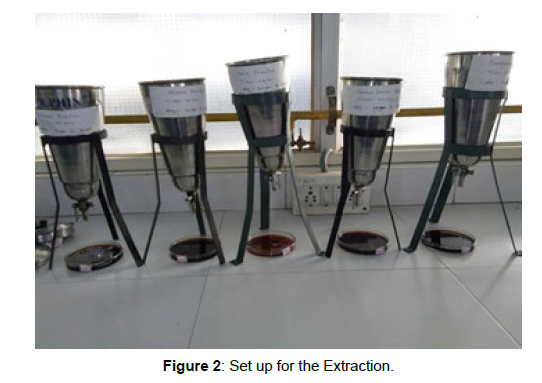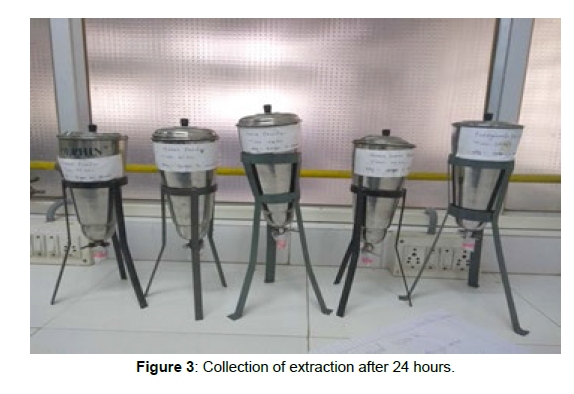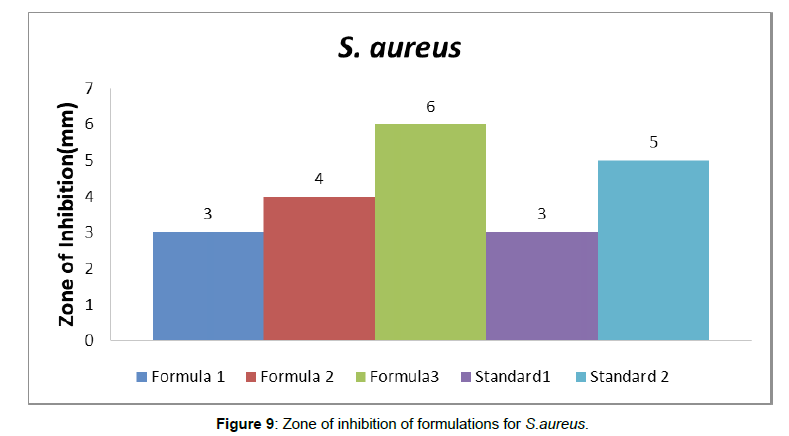Preparation, Evaluation & Comparison of Herbal Mouthwash against Oral Micro-Organisms
Received: 11-Nov-2022 / Manuscript No. ijrdpl-22-79574 / Editor assigned: 14-Nov-2022 / PreQC No. ijrdpl-22-79574 / Reviewed: 28-Nov-2022 / QC No. ijrdpl-22-79574 / Revised: 02-Dec-2022 / Manuscript No. ijrdpl-22-79574 / Accepted Date: 08-Dec-2022 / Published Date: 09-Dec-2022 QI No. / ijrdpl-22-79574
Abstract
Medicinal plants plays vital role in curing diseases due to their antimicrobial activity against human pathogens through decades. Herbal mouthwashes are in high demand, because they act on oral pathogens and relive the pain instantly and are also less side effective. One of the most common infectious diseases encountered by many individuals is dental carries and periodontal diseases at different stages of their life time. Dental carries include the cavity formation, eruption of enamel, swollen gums, bleeding gums. Dental carries are high among children and adolescents, because they do not practice proper oral hygiene. Prepared antimicrobial Herbal Mouthwash from the solvent extract of five different herbs like Naie, Guava, Pomegranate, Dikmali and Henna that acts against the oral pathogens namely S.aureus, S. pyrogen, E. coli and C. albicans to check the antimicrobial activity by using Disc Diffusion method.The prepared Herbal Mouthwash had shown the antimicrobial activity against used test microorganisms.
Keywords
Herbal; Extraction; Micro-organisms; Mouthwash
Introduction
The mouth washes are concentrated aqueous anti-bacterial solutions that are used against oral microbes to counter oral infection, cleansing, to get rid of bad breath refreshing, antiseptic. The mouthwash plays an prominent role in the oral hygiene of an individual, it helps to relieve symptoms of inflamed gums gingivitis. And also it reliably used to destruct the pathogenic germs. The mouth washes are used by most of the dental patients to overcome sour mouth i.e. xerostomia, ulcerated throat and sensitive teeth. Dentists always use mouthwash as an antimicrobial agent before oral surgery of the patients, because they help to sterilize the surface of the inflamed gums and teeth, thereby the contamination of any other microorganisms can be avoided. Ancient Egyptians are known to be responsible for the first artistic drawings that emphasize the importance of beauty and hygiene. An unclean body was thought to be impure. PedaniusDioscorides, a Greek physician and surgeon (40–90 AD) whose writings served as a medical textbook, suggested for treatment of bad breath a mouthwash mixture of the following: a decoct of the leaves of the olivetree, milk, the juice of pickled olives, gum myrrh with wine and oil, pomegranate peelings, nutgalls, and vinegar. The ancient Romans included teeth cleaning as part of their [1-9] religious ceremonies. The patriarchy required their slaves to clean their teeth. The Romans included a secret ingredient in their mouthwash: human urine. They imported urine from Portuguese people because they thought it had more strength. Until the 18th century, urine continued to be an active ingredient in toothpaste and mouthwash because of the ammonia’s cleansing abilities.
1. Mouthwashes can be broadly classified as
a. Chemical mouthwashes
b. Herbal mouthwashes
a. Chemical mouthwashes
Usually contains antimicrobial agents, such aschlorhexidinegluconate which is very potent chemoprophylacticagent, it has abroad spectrum action especially against Mutans Streptococci group. But it has many side effectslike staining of teeth, altering the test of the mouth and desquamation of oral mucosa (Figure 1).
a. Herbal mouthwashes
The importance of herbs is highly considered as effective in contrast to chemical products. Medicinal plants, plays vital role in curing diseases due to their antimicrobial and antifungal activity against human pathogens through decades. Herbs are being widely explored to discover alternatives to syntheticantibacterial agents. Herbal Mouthwash act on oral pathogens and relives pain instantly and are also less side-effective.
a. Uses of mouthwash
1. Antiseptic/As antibacterial
2. Astringent
3. Cooling and refreshing action
b. Aim and objectives
• To prepare Herbal Mouthwash.
• To evaluate prepared Herbal Mouthwash.
• To compare the prepared Herbal Mouthwash with marketed
Chemical Mouthwash.
Details of Selected Herbal Plant
Material and Method
Collection of herbal plant materials
Herbal plant materials like Guavawas collected locally from farm at Solapur city and remaining herbs like Naie, Dikmali, (Table 1) Pomegranate and Henna were purchased from local Market of AyurvedicStore at Solapur, Maharashtra, India in the month of 16thJanuary 2018 (Table 1-9).
Naie |
||
|---|---|---|

|
Synonym | Brilliant Gardenia, Cambi resin tree, Gardenia lucida |
| Botanical name | Gardenia gummifera | |
| Chemical constituents | It contains 89.9%of resins, 0.1%volatile oils and a coloring agent gardenin. Besides these it contains certain alkaloids and minerals. | |
| Uses | It is used as carminative, stimulant, vermin-fuge, wound healer, painkiller, insect repellent and majorly used in gums and tooth problems, anti septic and anti bacterial. | |
| Part used | Gum from bark part | |
Table 1: Pharmacognostic scheme of Dikmali.
Naie |
||
|---|---|---|
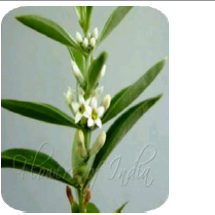
|
Synonym | Indian whitehead,Bahuguni,mamejaw |
| Botanical name | Enicostemmaaxillare | |
| Chemical constituents | A fruit mainly contains gum resin and numbers of flavonoids are also present.Whereas it includes gardenin and also woogninderalong with alkaloids, tannins. | |
| Uses | It is mainly used in diabetes, arthritis, skindiseases, hernia, and swelling. Antibacterial, anti inflammatory and anti oxidant. | |
| Part used | Leaves | |
Table 2: Pharmacognostic scheme of Naie.
Pomegranate |
||
|---|---|---|

|
Synonym | Apple fruit |
| Botanical name | Punicagranatum | |
| Chemical constituents | Ellagicacid,punicalagin,punicalin.punicicacid,urolithinA with 85%of water and others are ascorbic acid citric acid | |
| Uses | It is mainly used as rich source of vitamin C,detoxifyingagent,combinant tool against heart diseases and also for dental hygiene, anti oxidant, antimicrobial etc. | |
| Part used | Peel part | |
Table 3: Pharmacognostic scheme of Pomegranate.
| Henna | ||
|---|---|---|

|
Synonym | Egyptian privet, Lawsonia Alba, Mehandi |
| Botanical name | Lawsoniainermis | |
| Chemical constituents | The phytochemicals present in Henna are phenols,andglycosides.Lawsoneisb an active constituent while others are gallicacid,resin, sugars,tannins. | |
| Uses | It is mainly used as antibacterial, treat headache, antifungal, astringent, aromatic, cooling and analgesic | |
| Part used | Leaves | |
Table 4: Pharmacognostic scheme of Henna.
Guava |
||
|---|---|---|
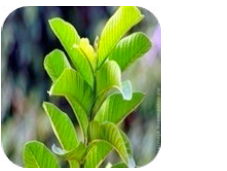
|
Synonym | Psidium, guava bush, Peru |
| Botanical name | Psidiumguajava | |
| Chemical constituents | Polyphenol, Flavonoids, carotenoids, essential oils, 10% tannins, saponins | |
| Uses | Anti-oxidant, anti-infalmmatory, anti-bacterial | |
| Part used | Leaves | |
Table 5: Pharmacognostic scheme of Guava.
| Microbes | Dilution of the extracts | Zone Of Inhibition (mm) |
Sensitivity | Resistance |
|---|---|---|---|---|
| E.coli | 1mg/ml | 0 | - | + |
| 2mg/ml | 0 | - | + | |
| S.aureus | 1mg/ml | 0 | - | + |
| 2mg/ml | 3 | + | - | |
| C.albicans | 1mg/ml | 0 | - | + |
| 2mg/ml | 5 | + | - | |
| S.pyrogen | 1mg/ml | 5 | + | - |
| 2mg/ml | 6 | + | - |
Table 6: Zone of inhibition in Dikmali extracts.
| Microbes | Dilution of the extracts | Zone Of Inhibition (mm) |
Sensitivity | Resistance |
|---|---|---|---|---|
| E.coli | 1mg/ml | 1 | + | - |
| 2mg/ml | 1 | + | - | |
| S.aureus | 1mg/ml | 0 | - | + |
| 2mg/ml | 2 | + | - | |
| C.albicans | 1mg/ml | 0 | - | + |
| 2mg/ml | 2 | + | - | |
| S.pyrogen | 1mg/ml | 3 | + | - |
| 2mg/ml | 3 | + | - |
Table 7: Zone of inhibition in Naie extracts.
Microbes |
Dilution of the extracts | Zone Of Inhibition (mm) |
Sensitivity | Resistance |
|---|---|---|---|---|
| E.coli | 1mg/ml | 0 | - | + |
| 2mg/ml | 2 | + | - | |
| S.aureus | 1mg/ml | 0 | - | + |
| 2mg/ml | 0 | - | + | |
| C.albicans | 1mg/ml | 4 | + | - |
| 2mg/ml | 6 | + | - | |
| S.pyrogen | 1mg/ml | 0 | - | + |
| 2mg/ml | 2 | + | - |
Table 8: Zone of inhibition in Henna extracts.
| Microbes | Dilution of the extracts | Zone Of Inhibition(mm) | Sensitivity | Resistance |
|---|---|---|---|---|
| E.coli | 1mg/ml | 0 | - | + |
| 2mg/ml | 2 | + | - | |
| S.aureus | 1mg/ml | 0 | - | + |
| 2mg/ml | 2 | + | - | |
| C.albicans | 1mg/ml | 0 | - | + |
| 2mg/ml | 2 | + | - | |
| S.pyrogen | 1mg/ml | 1 | + | - |
| 2mg/ml | 4 | + | - |
Table 9: Zone of inhibition in Pomegranate extracts.
Preparation of extract
Preparation of powder
• Dikmali, Naie and Henna: Readymade powders utilized directly (Table 2).
• Guava leaves were shadow dried at room temperature for 1 week before extraction process.
• Leaves were cut into small pieceswith the help of scissorandgrinded in mortar & pestle to fine texture powder form and stored in air –tight polythene bag (Figure 2).
Solvent extraction
Powdered plant material was extracted by Percolation Method (Exhaustive extraction) using ethanol and distilled water (1:4).
1. Procedure Followed For Percolation
• Drug in a suitably powdered form.
• Imbibe the powdered drug with menstruum for a period of one hour.
• Packed evenly into the percolator.
• A piece of filter paper is placed on surface followed by a layer of clean sand so that top layers of drugs are not disturbed.
• Sufficient menstruum is poured over the drug slowly and evenly to saturate it, keeping the tap at bottom open for passing of occluded gas to pass out.
• Sufficient menstruum is also added to maintain a small layer above the drug and allowed to stand for 24 hours (Figure 3).
• 75% of the volume of the finished product is collected.
• Mark is pressed and expressed liquid is added to the percolate giving 80% to 90% of the final volume.
• Volume is adjusted with calculated quantities of fresh menstruum.
• Evaporation and concentration to get finished products by applying suitable techniques and apparatus.
Evaluation Test
1. Color: Yellowish Brown
2. Odour: Aromatic
3. Taste: Sweet, Pleasant
Microbial test
Collection of Micro-organisms
Mouth organisms like Staphylococcus aureus, Streptococcus pyrogens, Escherichia coli, and Candida albicans were procured from AshwiniSahakariHospital& Research Centre, Solapur and maintained and incubated at 360 C for 2 hrs, before performing the activity.
Collection of oral swab
The sterile cotton swab was rubbed on to the gums and periodontal region of both upper and lower jaws of the individuals (totally 6 oral swabs) were collected.
Antibacterial Activity
Disc Diffusion Method
A sterile 500 ml conical flask was used to prepare nutrient agar
(HIMEDIA M001-100G) Lot 0000293649 Expiry: MAR 2022
• Prepared Media and petri dishes were autoclaved at 1210C for 15min.
(Autoclave LabHosp size 12X12)
• Then 15-20 ml of agar was poured in each sterile Petri dish.
• The plates were air dried under UV radiated in the laminar air flow (KlenzaidsBioclean devices Ltd.) for 15 min.
• The bacterial colonies were inoculated into nutrient broth and incubated for 24hrs.
• In broth turbid solution indicated the viable microorganisms ready to use for testing the antibacterial activity.
• From this turbid solution havingmicro-organism inoculated into prepared agar plate.
• The discs were diffused in testing samples.
• Then these diffused discs were placed on agar plate and kept it in incubator for 48 hrs.at 37oC.
• After 48 hrs the results were identified and recoded the zone of inhibition (Figure 4).
• His zone of inhibition was identified for the resistance of the micro-organisms too (Figure 5-12).
Antimicrobial testing by Disc Diffusion method
• Extracts:-(Naie, Dikmali, Henna, Guava & Pomegranate)
• Formulated Herbal Mouthwash:- (Formula-1, Formula-2, Formula-3)
• Standard Mouthwash: (Standard-1 & Standard-2)
Result & Discussion
Solvent extraction of herbal plants
The herbs used in the prepared herbal mouthwash like Dikmali, Naie, Pomegranate, (Table 3) Henna and Guava can be used in oral care formulations like mouthwash. The solvent extracts were prepared as it shows very less side-effects than commercially available chemical mouthwashes.
Collection of Micro-organisms
The test organisms were identified & the results were recorded based on morphological & cultural characters.
Antimicrobial activity
The extracts were taken in different dilutions. The sensitivity & resistance of the organisms against formulated herbal mouthwash were analyzed. The result showed that all the herbslike Dikmali, Naie, Pomegranate, Henna (Table 4) and Guava used in this study have antimicrobial activity (Table 5, Table 9).
Dikmali: shows sensitivity towards Staphylococcus aureus, Strptococcuspyrogens, Candida albicans and shows resistance (Table 6) towards Escherichia coli.
Naie: shows sensitivity (Table 7) towards Staphylococcus aureus, Streptococcus pyrogens, Candida albicans& Escherichia coli.
Guava: shows sensitivity towards Staphylococcus aureus, Candida albicans& Escherichia coli& shows resistance towards Streptococcus pyrogens (Table 10).
Microbes |
Dilution of the extracts | Zone Of Inhibition (mm) | Sensitivity | Resistance |
|---|---|---|---|---|
| E.coli | 1mg/ml | 0 | - | + |
| 2mg/ml | 2 | + | - | |
| S.aureus | 1mg/ml | 0 | - | + |
| 2mg/ml | 2 | + | - | |
| C.albicans | 1mg/ml | 2 | + | - |
| 2mg/ml | 3 | + | - | |
| S.pyrogen | 1mg/ml | 0 | - | + |
| 2mg/ml | 0 | - | + |
Table 10: Zone of inhibition in Guava extracts.
Pomegranate: shows sensitivity towards Staphylococcus aureus, Streptococcus pyrogens, Candida albicans& Escherichia coli.
Henna: shows sensitivity (Table 8) towards Streptococcus pyrogens, Candida albicans& Escherichia coli & shows resistance towards Staphylococcus aureus.
It was found that the antimicrobial activity of 10% w/v of extract was found to be substantial and at the same time it is tolerable as regards the palatability due to bitterness. So, the formulation prepared by the 10% w/v of extract provides optimal antimicrobial activity and palatability to the formulation. The prepared formulations shows positive results against the randomly taken mouth saliva sample. The formulation of 10% w/v of extract shows significant effect in terms of antimicrobial activity compare with the marketed synthetic drug like chlorhexidine (Table 11-17).
| Microbes | Formula | Zone Of Inhibition (mm) | Sensitivity | Resistance |
|---|---|---|---|---|
| E.coli | Formula 1 | 3 | + | - |
| Formula 2 | 4 | + | - | |
| Formula 3 | 6 | + | - | |
| S.aureus | Formula 1 | 3 | + | - |
| Formula 2 | 4 | + | - | |
| Formula 3 | 6 | + | - | |
| C.albicans | Formula 1 | 3 | + | - |
| Formula 2 | 6 | + | - | |
| Formula 3 | 6 | + | - | |
| S.pyrogen | Formula 1 | 3 | + | - |
| Formula 2 | 6.3 | + | - | |
| Formula 3 | 7 | + | - | |
| Mouth Saliva (Random) |
Formula 1 | 6 | + | - |
| Formula 2 | 6 | + | - | |
| Formula 3 | 7 | + | - |
Table 11: Zone of Inhibition in Formulated Herbal Mouthwash.
| Microbes | Formula | Zone Of Inhibition (mm) | Sensitivity | Resistance |
|---|---|---|---|---|
| E.coli | Standard 1 | 10.2 | + | - |
| Standard 2 | 8 | + | - | |
| S.aureus | Standard 1 | 3 | + | - |
| Standard 2 | 5 | + | - | |
| C.albicans | Standard 1 | 6 | + | - |
| Standard 2 | 3 | + | - | |
| S.pyrogen | Standard 1 | 4 | + | - |
| Standard 2 | 4 | + | - | |
| Mouth Saliva (Random) |
Standard 1 | 7 | + | - |
| Standard 2 | 5 | + | - |
Table12 : Zone of Inhibition in Standard Mouthwash.
| Crude drugs | Weight of drug before Extraction | Weight of drug after extraction |
|---|---|---|
| Naie | 40 gm | 2.39 gm |
| Guava | 40 gm | 3.8 gm |
| Dikmali | 15 gm | 0.94 gm |
| Pomegranate | 50 gm | 5.63 gm |
| Henna | 20 gm | 0.51 gm |
Table 13: Following table shows total yield obtained after percolation.
| Sr No. | Ingredients | Formula 1 | Formula 2 | Formula 3 |
|---|---|---|---|---|
| 1 | Naie Extract | 10mg | 20mg | 30mg |
| 2 | Dikmali Extract | 10mg | 20mg | 30mg |
| 3 | Guava Extract | 10mg | 20mg | 30mg |
| 4 | Pomegranate Extract | 10mg | 20mg | 30mg |
| 5 | Henna Extract | 10mg | 20mg | 30mg |
| 6 | Menthol | 0.2g | 0.2g | 0.2g |
| 7 | Sodium Saccharine | 0.15g | 0.15g | 0.15g |
| 8 | Methyl paraben | 0.11g | 0.11g | 0.11g |
| 9 | Propyl Paraben | 0.014g | 0.014g | 0.014g |
| 10 | PEG 400 | 6.59ml | 6.59ml | 6.59ml |
| 11 | Distilled Water | Q.S | Q.S | Q.S |
Table14 : Formulation: After percolation all the extracts were dried for a week to get the residual mass. Using this dried mass prepared the herbal mouthwash by using following different formulae for 100 ml.
| Sr. No. | Brand Detail | Ingredients | Mfg Date | Exp Date |
|---|---|---|---|---|
| 1. | (Standard 1)‘Hexidine’ ICPA Health Products Limited, Mumbai , Maharashtra , India |
Chlorhexidinegluconate BP 0.2%W/V |
Jul.17 | Jun.20 |
| 2. | (Standard 2)‘CMW’ Radius agencies , Mumbai , Maharashtra , India |
Chlorhexidinegluconate IP 0.2%W/V |
Oct.16 | Sep.19 |
Table 15: Standard Mouthwash Used for comparison study.
Mouthwash |
pH |
|---|---|
| Formula 1 | 6.47 |
| Formula 2 | 5.85 |
| Formula 3 | 5.77 |
Table 16: pH Test :( Standard Range: 5.1 to 7.3).
Mouthwash |
Viscosity |
|---|---|
| Formula 1 | 0.9528 cps |
| Formula 2 | 0.9135 cps |
| Formula 3 | 0.9403 cps |
Table 17: Viscosity: (Standard Range: 1 to 4 cps).
Conclusion
Inclusion of Naie in mouthwash showed sensitivity and significantly effective against oral micro-organisms. Pomegranate in mouthwash helps in destruction of microbes. Hence the prepared herbal mouthwash shows effectiveness against oral micro-organisms namely Staphylococcus aureus, Streptococcus pyrogens, Candida albicans& Escherichia coli. An attempt has been made to outline some of the commonly available herbs which are readily available can be used as effective mouthwashes. People can use and promote such cost effective measures of maintaining the oral health which are also devoid of many unwantedside effects. Thus the prepared herbal mouthwashes can also be routinely used for improving oral hygiene of children and adults as well as in patients with dental caries and gingivitis.
References
- Bauer AW, Kirby WMM, Sherris JCT, Turck M (1966) Antibiotic Susceptibility testing by a standardized single disk method. Am J Clin Pathol 45:493-496.
- Bhavna J K, Vidhya D (2012) Herbal Mouthwash – A gift of nature. Int.J Pharma And Bio Sci 3: 1-10.
- Charles OE, Chukwuemeka SN, Ubong SE, Ifeanyichukwu RI, Chidimma SO, et al. (2007) A case of for the use of herbal extracts in oral hygiene: The Efficacy of Psidiumguajava based mouthwash formulations. Research Journal of Applieed Sciences 2: 1143-1147.
- Nam-Hui Y, Young PJ, Won-Kyung C, Taesoo K, Aeyung K, et al. (2013)Screening of aqueous extracts of medicinal herbs for anti microbial activity against oral bacteria. Integr Med Res 2: 18-24.
- Piyush DL, Rakesh K, Patel, Vandhana, M (2010) Antimicrobial activity of herbal mouthwash- Arowsh Liquid. Int J Chem Tech Res 2: 99-101.
- Aldhaher ZA (2013) Antimicrobial activity of different types of mouthwashes against Streptococcus mutans, Staphylococcus aureus and Candida albicans (In vitro study). vitro study). Bagh Coll Den 25:185-191.
- Ritam SN, Pratima G, Abhijit NG, Sujeet VK (2014) A randomized clinical trial to evaluate and compare the efficacy boftriphala mouthwash with 0.2% chlorhexidine in hospitalized patients with periodontal diseases.
- Menezes SM, Cordeiro LN, Viana GS (2006) Punicagranatum(pomegranate) extracts is active against dental plaque. J Herb Pharmacother 6920:79-92.
- Narhi TO, Tenovuo J, Ainamo A, Vilja P (1994) Antimicrobial factors, sialic acid, and protein concentration in whole saliva of the elderly. Scand J Dent Res 102: 120-125
Indexed at, Google Scholar, Crossref
Indexed at, Google Scholar, Crossref
Indexed at, Google Scholar, Crossref
Citation: Ingle S, Shinge JS, Jadhav S, Kabra P, Jaladi S, et al. (2022) Preparation, Evaluation & Comparison of Herbal Mouthwash against Oral Micro-Organisms. Int J Res Dev Pharm L Sci, 8: 143.
Copyright: © 2022 Ingle S, et al. This is an open-access article distributed under the terms of the Creative Commons Attribution License, which permits unrestricted use, distribution, and reproduction in any medium, provided the original author and source are credited.
Share This Article
Recommended Journals
Open Access Journals
Article Usage
- Total views: 1071
- [From(publication date): 0-2022 - Dec 22, 2024]
- Breakdown by view type
- HTML page views: 896
- PDF downloads: 175


